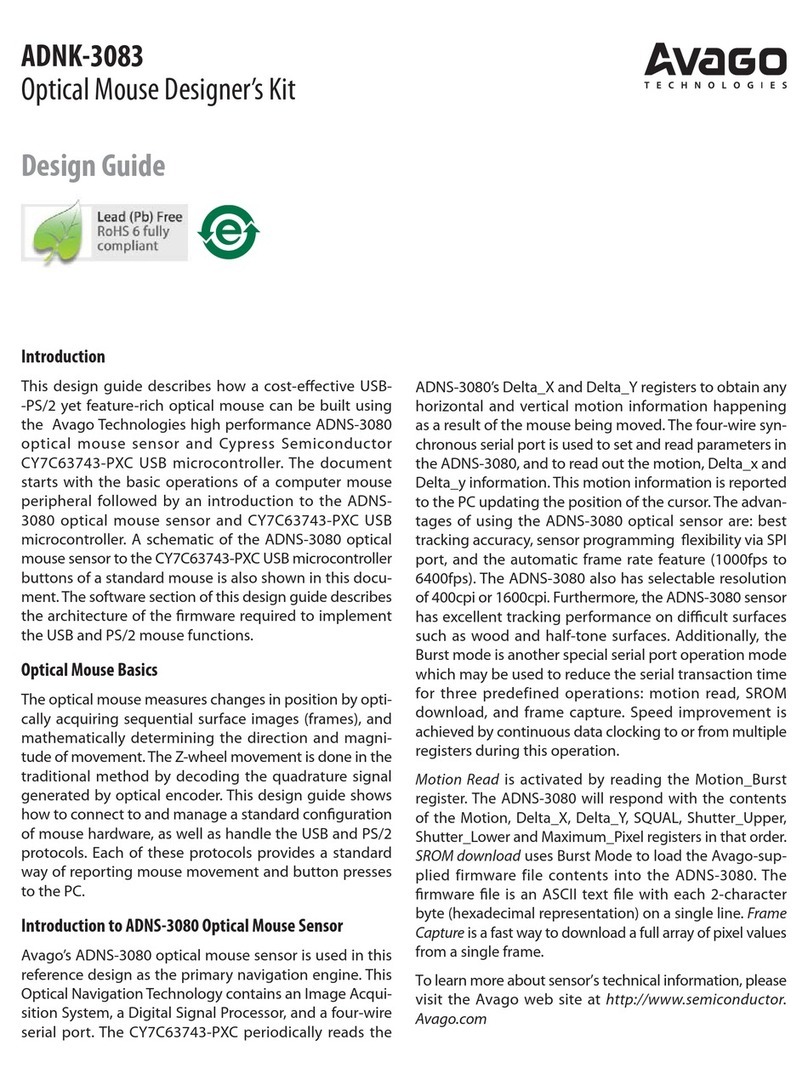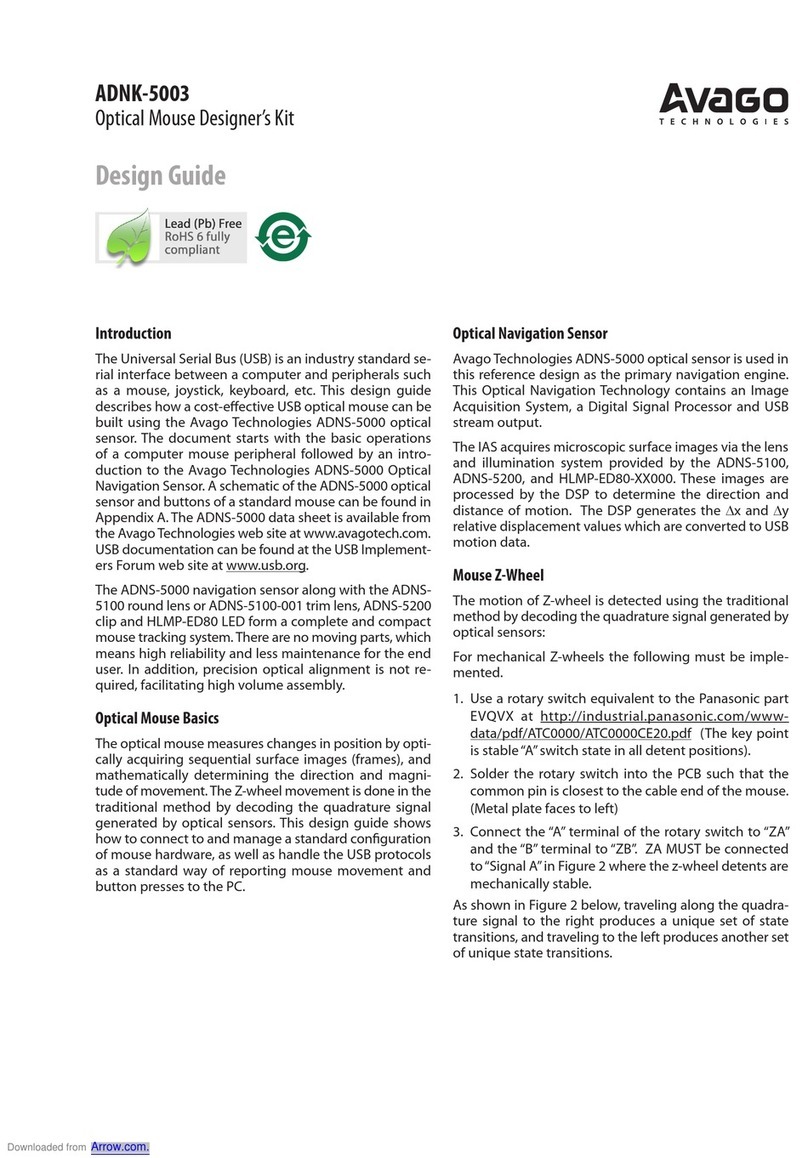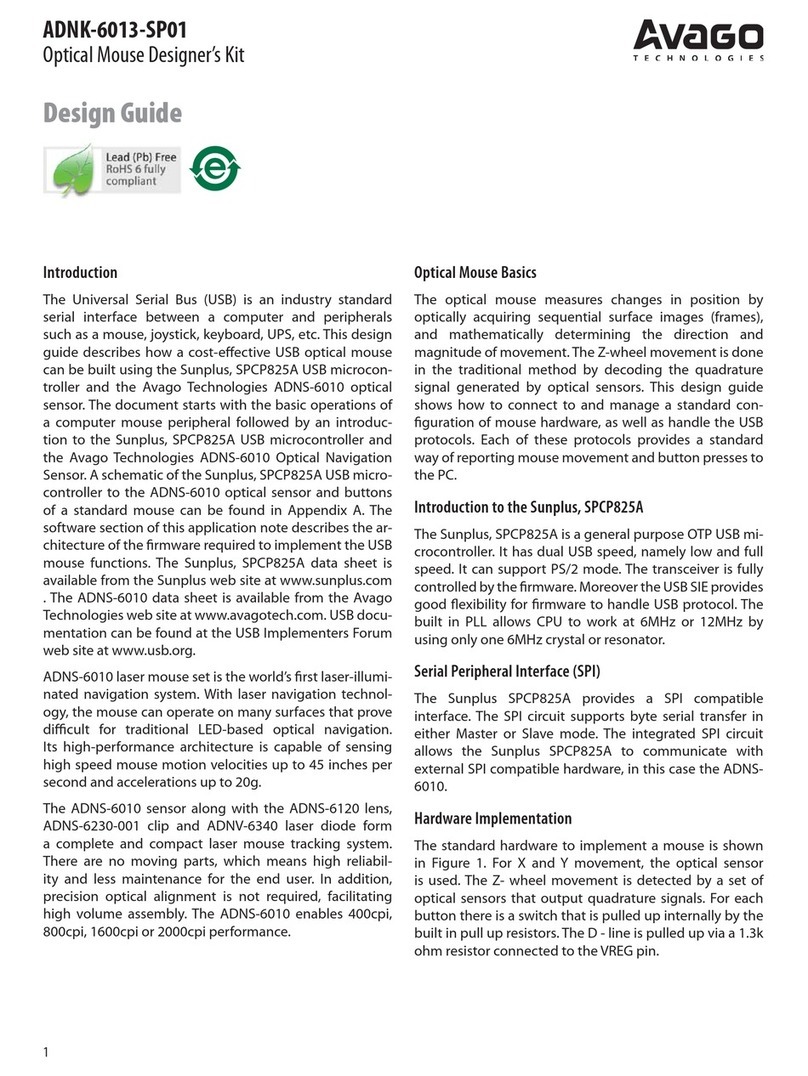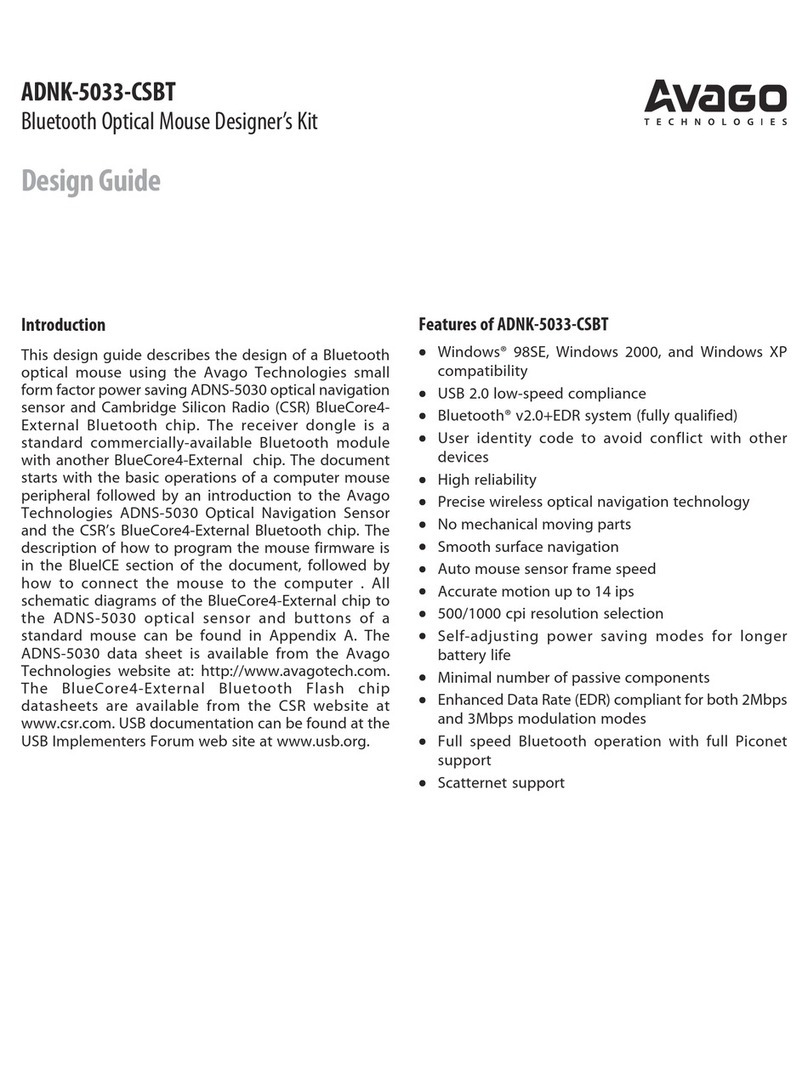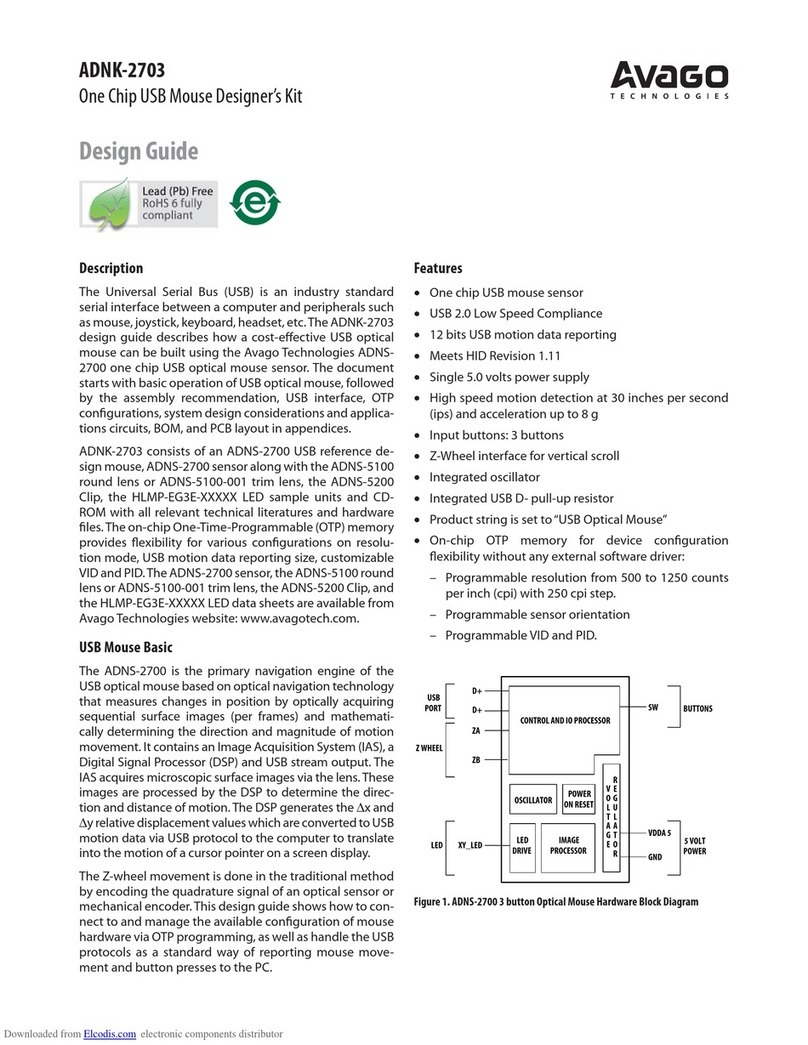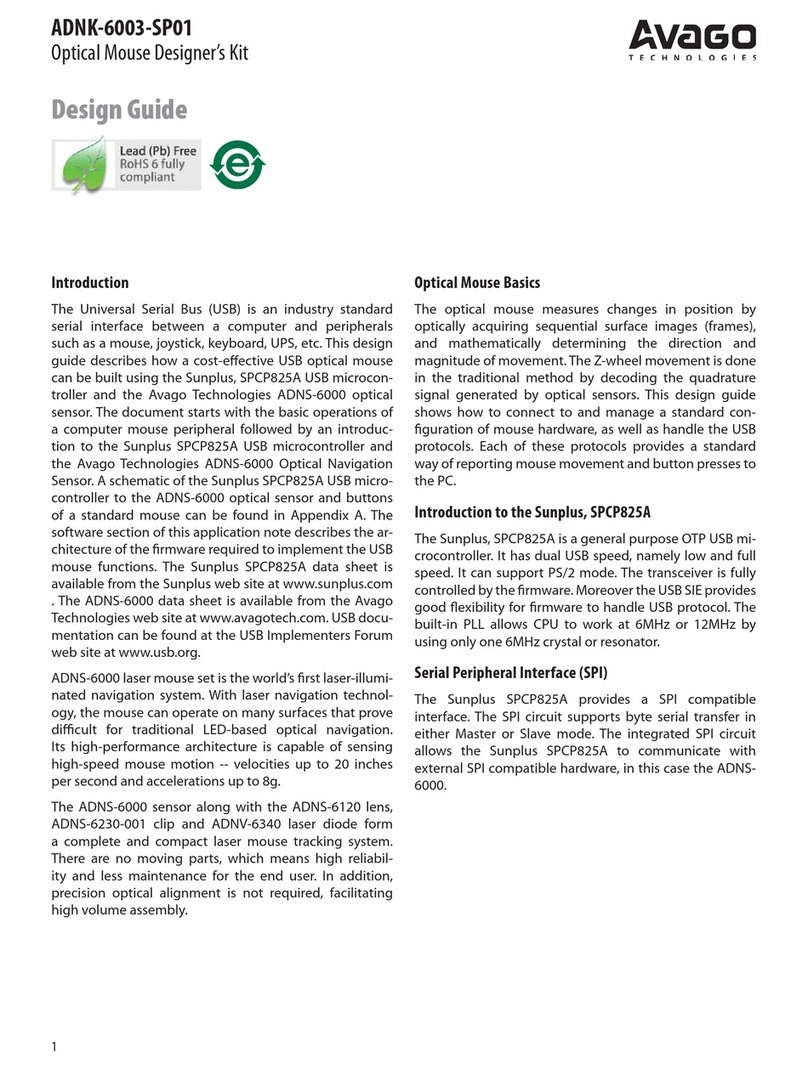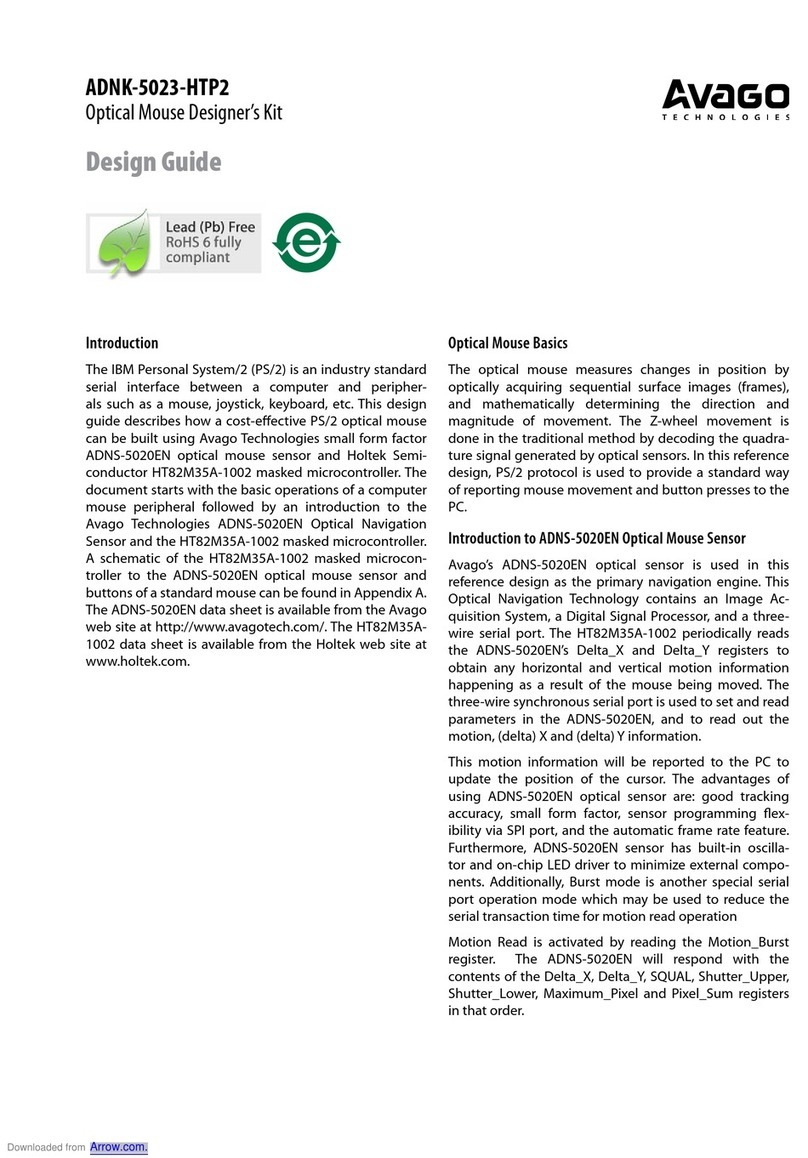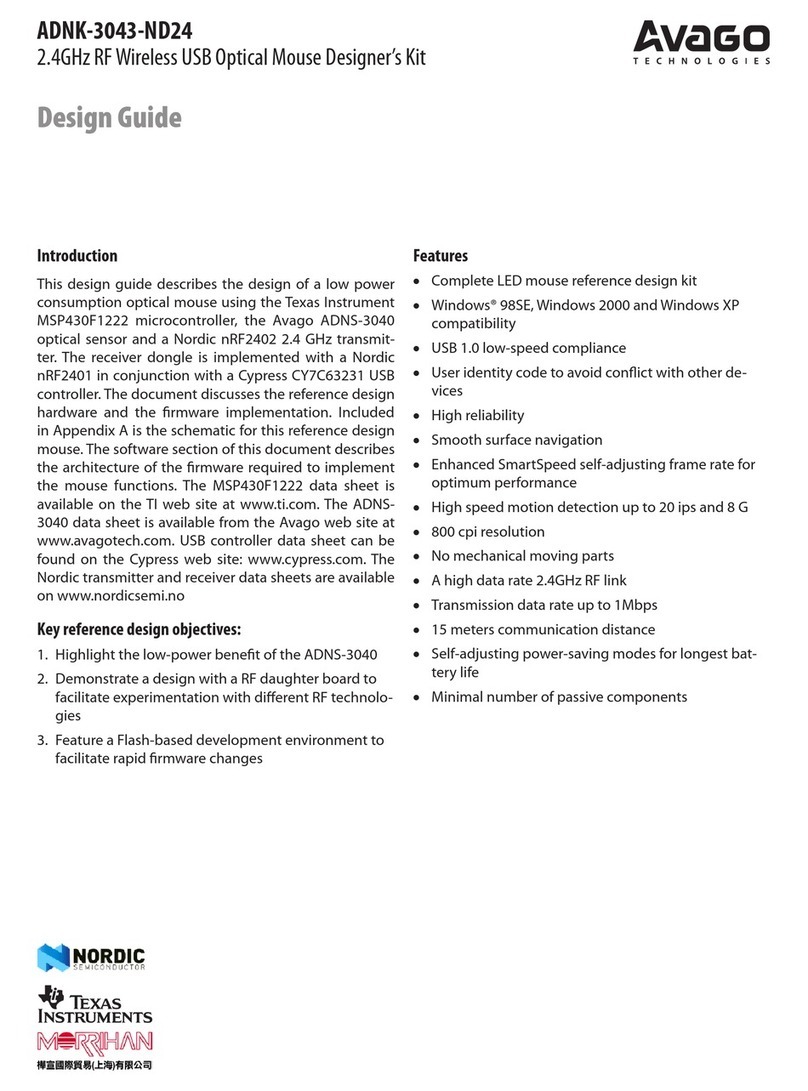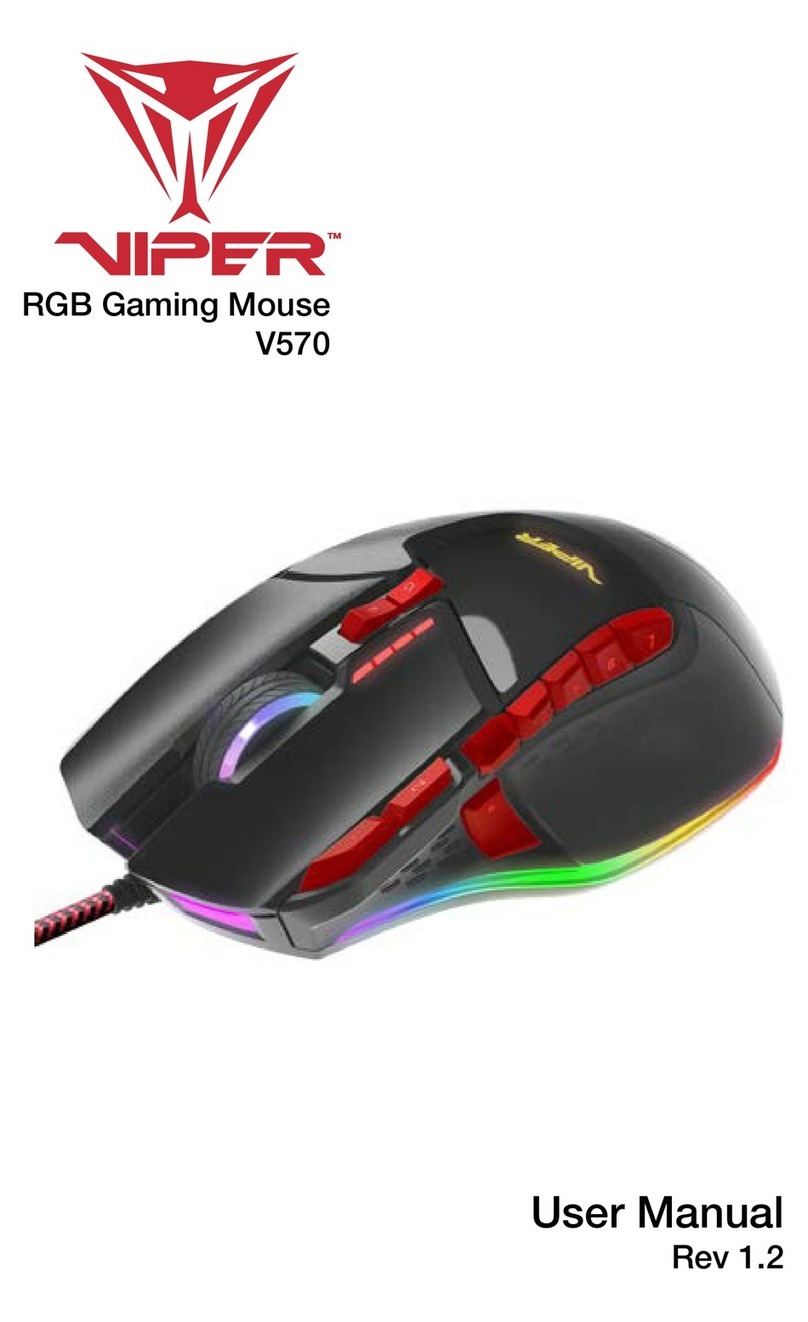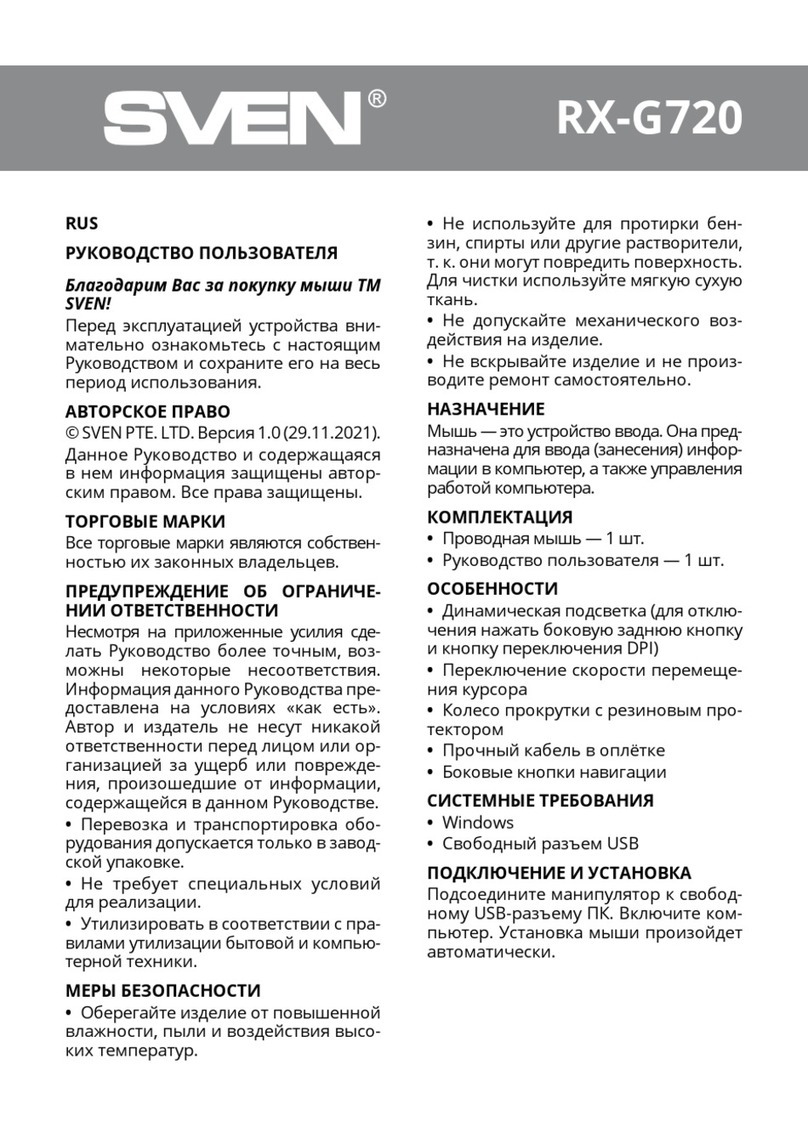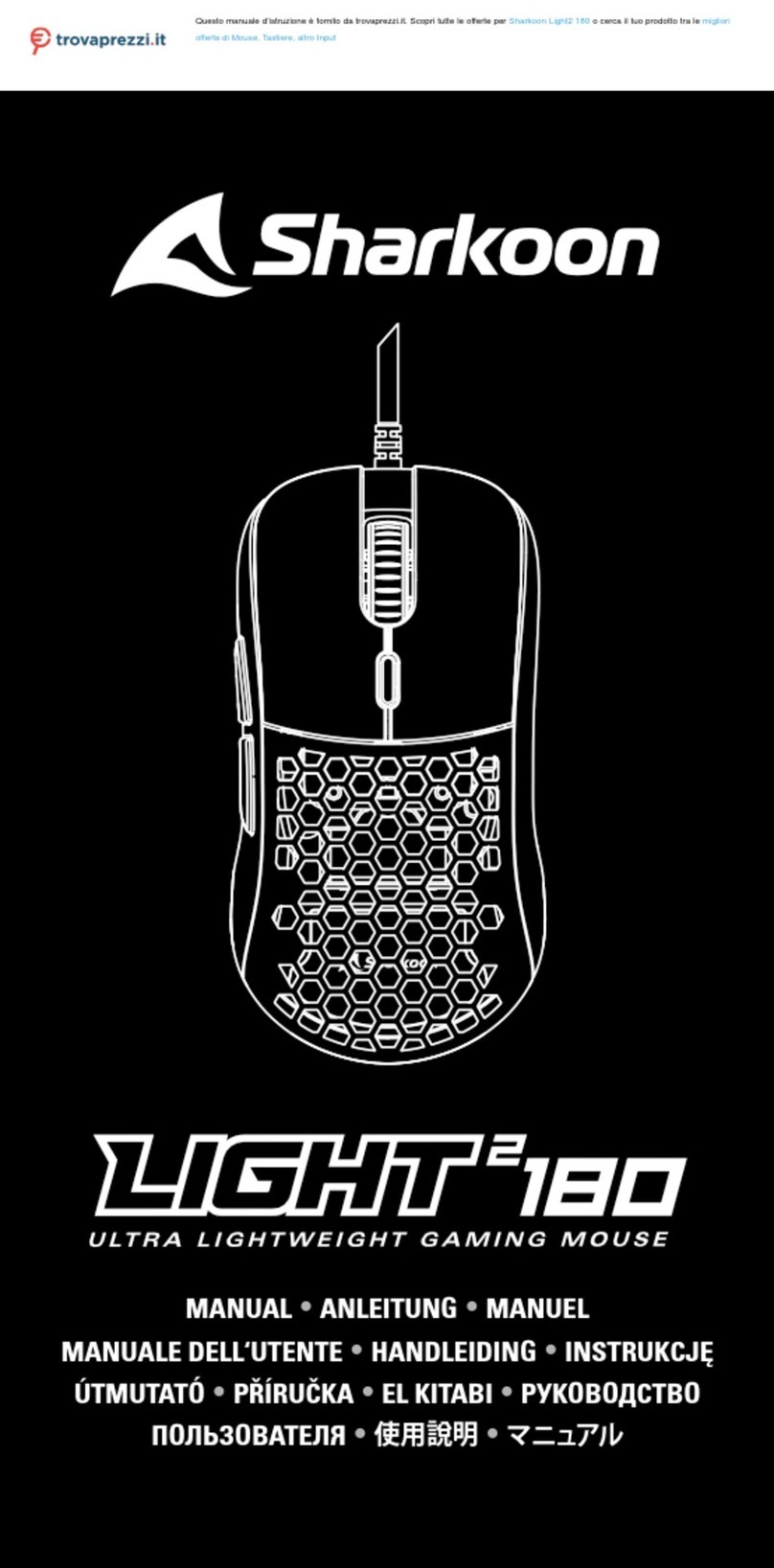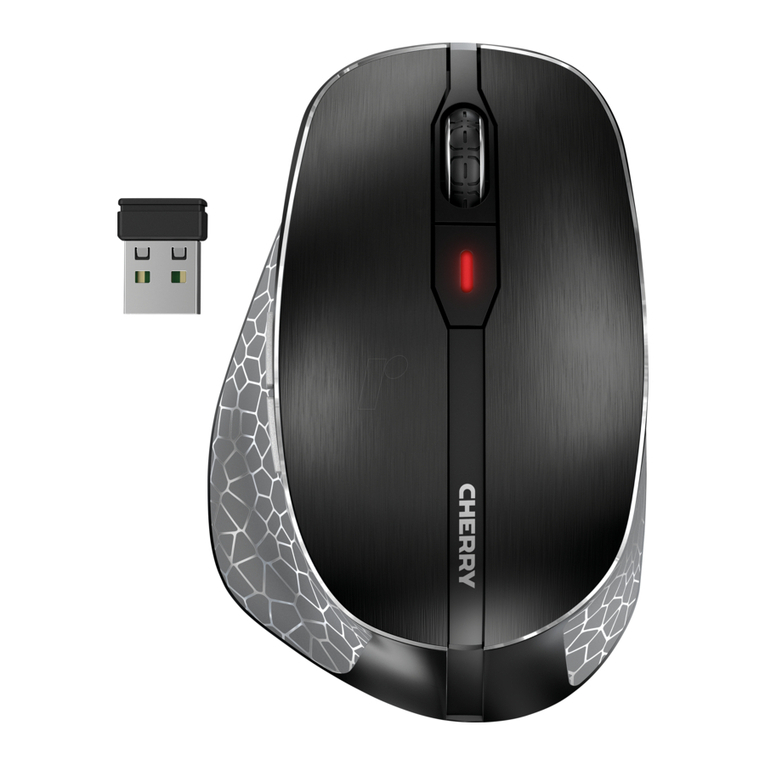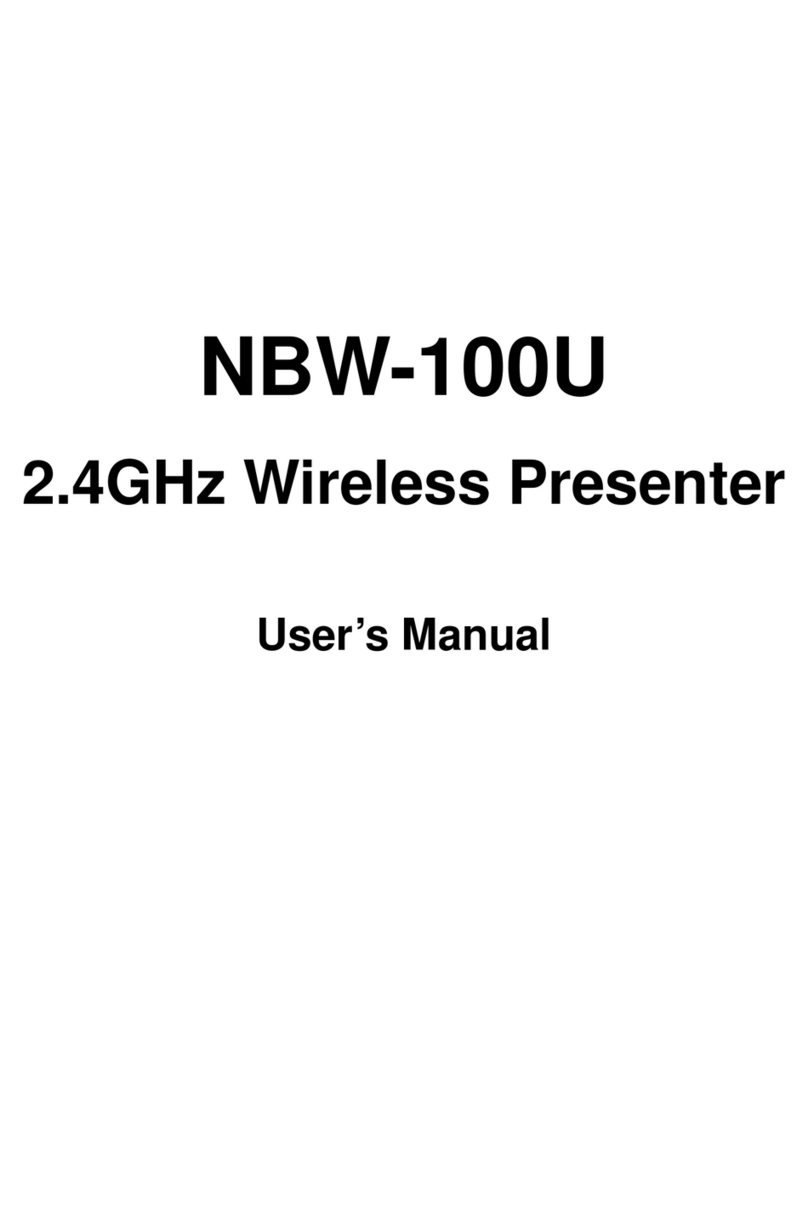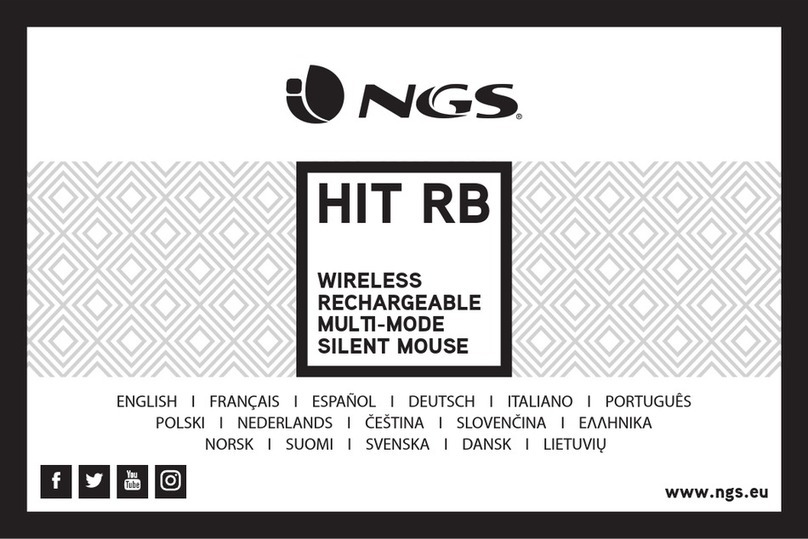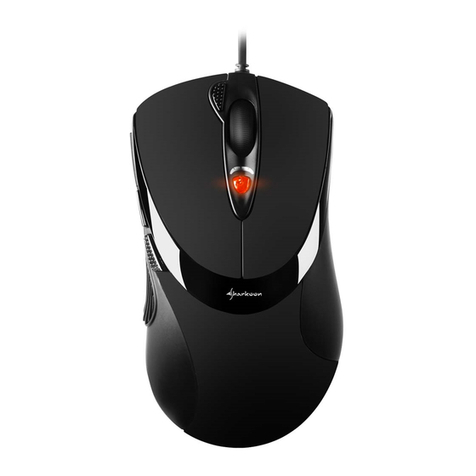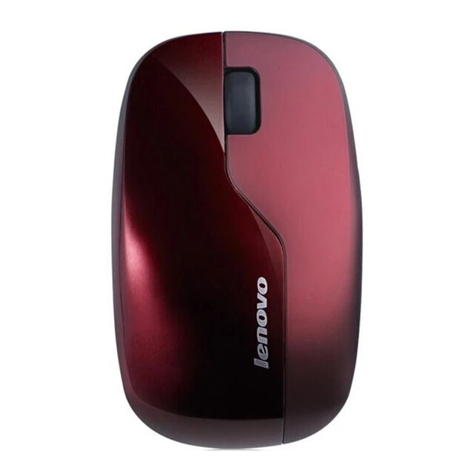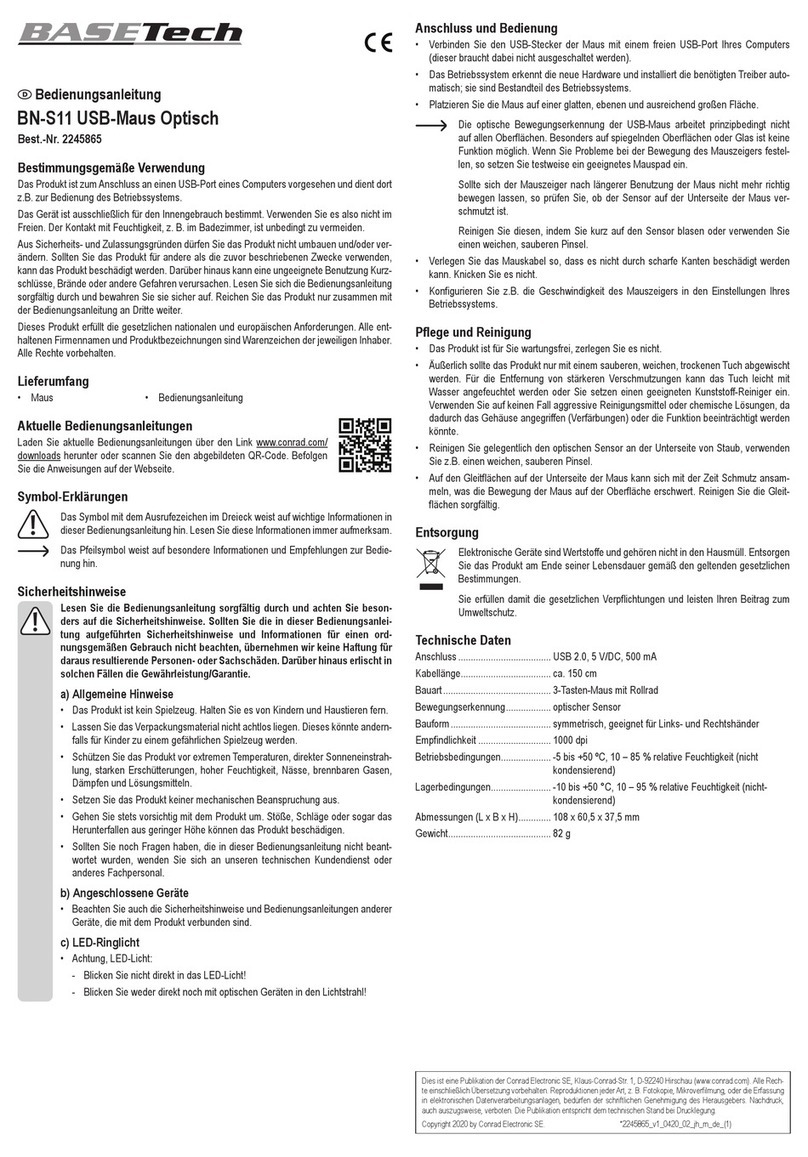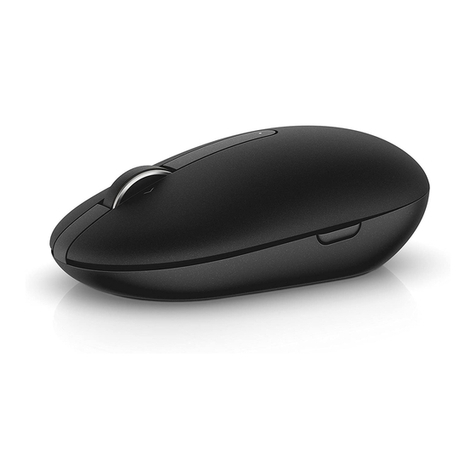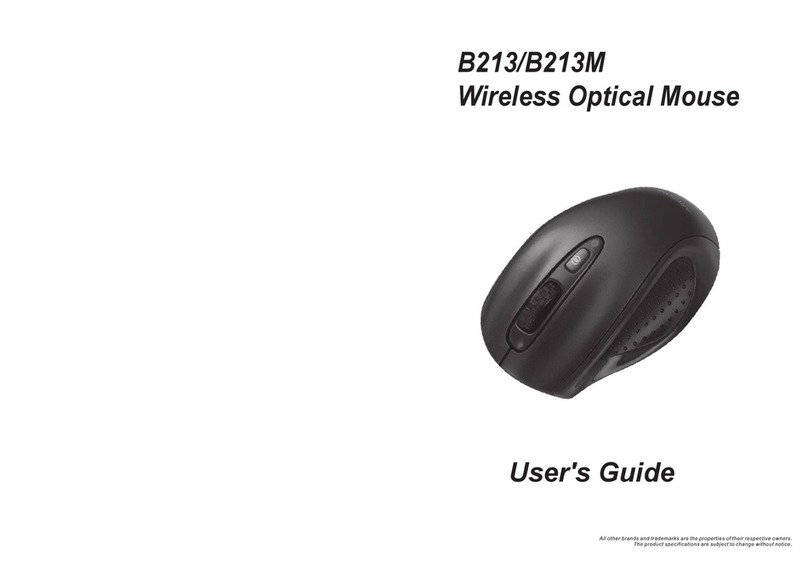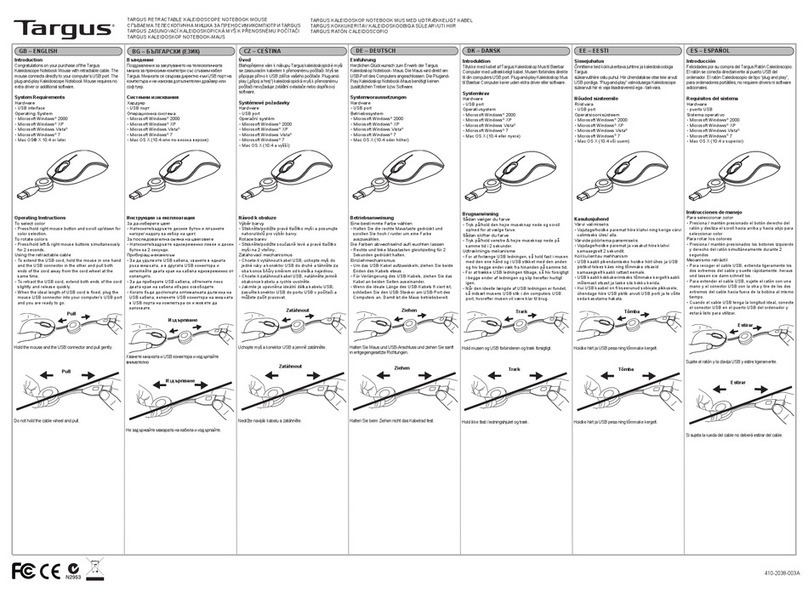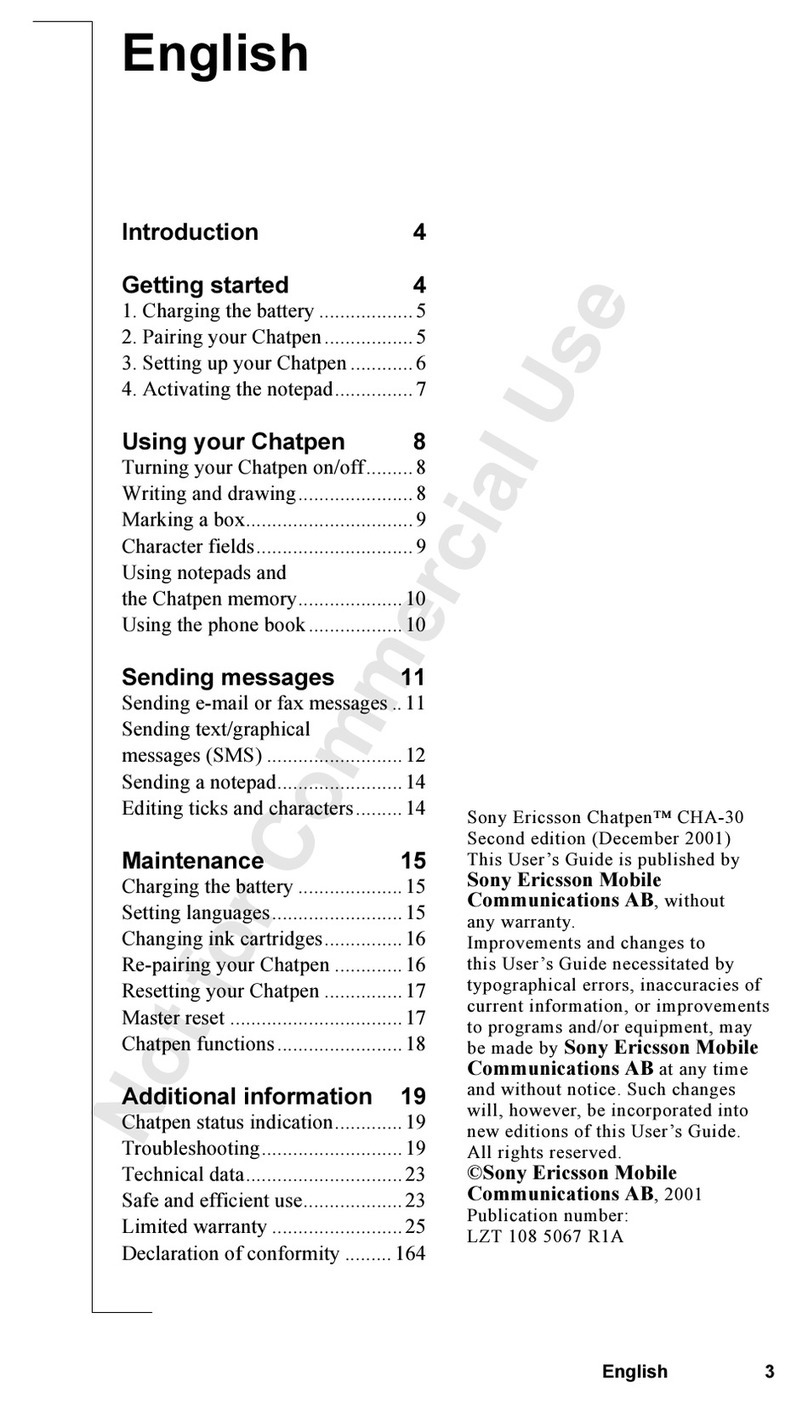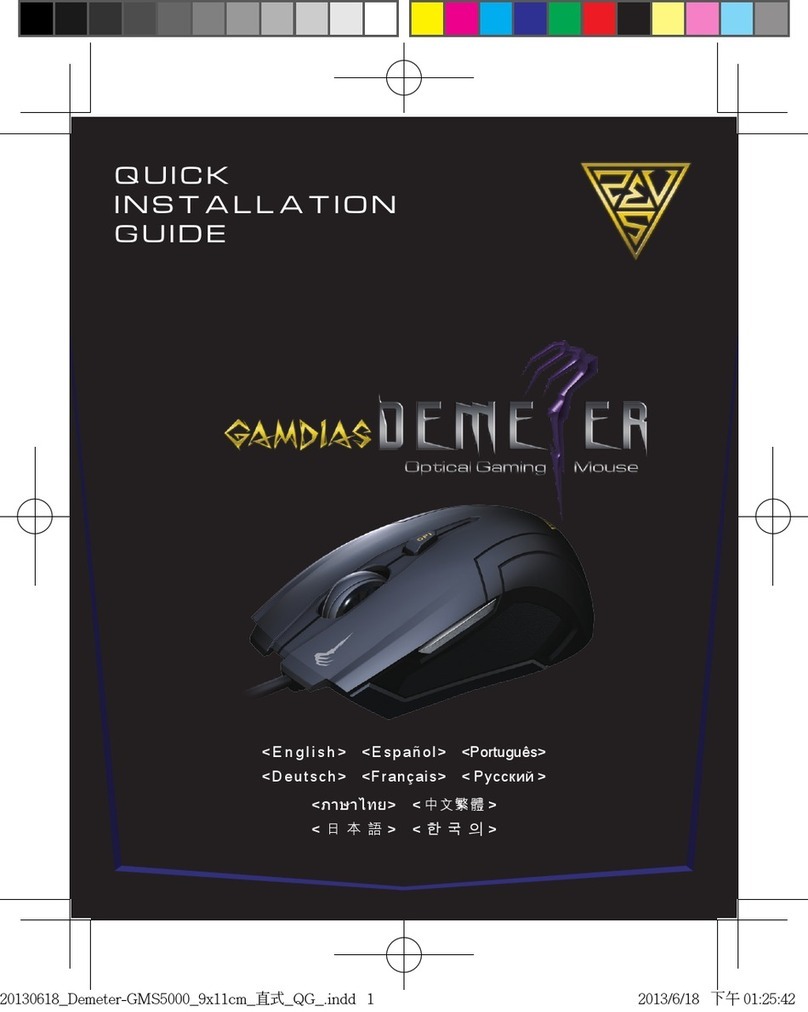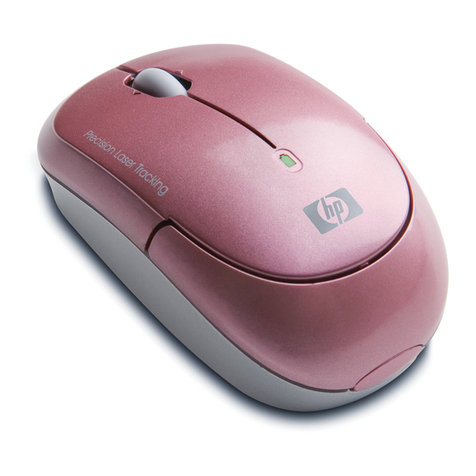
4
Introduction to Avago ADNS-2080 Low Power Optical
Mouse Sensor
Avago’s ADNS-2080 optical sensor is used in this reference
design as the primary navigation engine. The optical navi-
gation technology contains an Image Acquisition System
(IAS), a Digital Signal Processor (DSP), and a two-wire
serial port. The input to the sensor is mechanical motion
and is captured by the IAS as low resolution image pixel
arrays. The DSP then process the sequential images cap-
tured by the IAS with its patented image processing
algorithm before sending out the digitally processed
data over the serial interface. The digital data or output is
the horizontal motion information (Delta X) and vertical
motion information (Delta Y) from which the direction
and speed can be determined.
This motion information will be reported to the PC through
the 2.4 GHz RF and USB protocols to update the position
of the cursor. The advantages of using ADNS-2080 optical
sensor are the ecient power management, good tracking
capability and accuracy, good surface coverage and ex-
ibility of programming the optical sensor via the SPI port.
Features include:
Low Power Architecture
Smooth surface navigation
Programmable Periods/ ResponseTimes and Downshift
Times from one mode to another for Power Savings
‘Smart’ LED current switching depending on surface
brightness
High Speed Motion Detection of up to 30 ips
External Interrupt Output for Motion Detection
Triggering
Internal Oscillator – no clock input required
Selectable Resolution of up to 2000 cpi
Operating Voltage of As low as 2.1 V
Two wire Serial Port Interface
To get more technical information on this sensor, please
visit the Avago web site at http://www.avagotech.com.
Nordic nRF24LE1 Ultra Low Power Wireless
System-on-Chip Solution
The nRF24LE1 is a unique solution oering a complete ultra
low power (ULP) wireless system-on-chip (SoC) solution.
It integrates the industry best nRF24L01+ 2.4 GHz trans-
ceiver core, an enhanced 8051 microcontroller, ash mem-
ory and a wide range of analog and digital peripherals. The
8-bit microcontroller is powerful enough to run both the
RF protocol stack and the application layer, enabling a true
single chip implementation of ULP wireless application.
The nRF24LE1 is optimized to provide a single chip solu-
tion for ULP wireless applications. The combination of pro-
cessing power, memory, low power oscillators, real-time
counter, AES encryption accelerator, random generator,
plus a range of power saving modes provides an ideal plat-
form for implementation of RF Protocols. Benets include
tighter protocol timing, security, lower power consump-
tion and improved co-existence performance. For the
applicationlayerthenRF24LE1oersarichsetofperipherals
including: SPI, 2-wire, UART, 6 to 12-bit ADC, PWM, and
an ultra low power analog comparator for voltage level
system wake-up.
Features
Fully featured ultra low power nRF24L01+ 2.4 GHz
transceiver core
Worldwide 2.4 GHz ISM band operation
Enhanced ShockBurstTM hardware link layer
250 kbps, 1 Mbps and 2 Mbps on-air data rate options
Air compatible with nRF24L01; nRF24L01+; nRF24LU1,
andnRF2401A, -02, -E1 and -E2
Low cost external+/-60 ppm 16 MHz crystal
Enhanced 8-bit 8051 compatible microcontroller
32-bit multiplication-division unit
AES encryption/decryption accelerator
16 kbytes on-chip ash memory
1 kbyte on-chip data ash memory
512 bytes high-endurance data ash memory
1 kbyte on SRAM plus 256 bytes of IRAM
Low power 16 MHz crystal and RC oscillators
Ultra low power 32 kHz crystal and RC oscillators
Flexible real-time counter and three 16-bit timers/
counters
Ultra low power analog comparator for system wake-up
Rich set of digital interfaces including: SPI master/slave,
2-wire master/slave, and UART
2-channel PWM
Programmable resolution ADC: 6, 8, 10, or 12-bits
Random Number Generator based on thermal noise
Supports the Nordic nRFProbe hardware debugger
Programmable generic I/O pins
